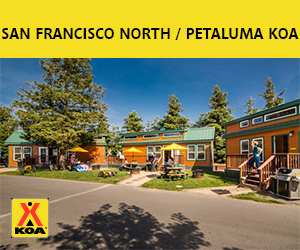American River

Running from the Sierra Nevada Mountain range to its confluence with the Sacramento River in Sacramento is the jewel of the Gold Country region. The American River is a 30-mile-long river that is fed by the melting snowpack of the surrounding mountains and its many tributaries including the North Fork, Middle Fork, and South Fork American River.
Known for the discovery of gold in 1848 at Sutter’s Mill in Coloma, the American River was a major contributor to the initial large-scale settlement of California. Today the river is extensively dammed for irrigation, flood control, hydroelectric power and serves as the main source of drinking water for Sacramento
During the Great Flood of 1862 newly elected Governor Leland Stanford had to travel to his inauguration by rowboat when the American River flooded massively due to the substantial amount of debris washed down by hydraulic mining which had choked the river channel. In response, the city of Sacramento undertook a massive project to raise its streets and buildings as much as 9.5 feet Many of the original sidewalks and the first floors of buildings remain as subterranean spaces underneath today’s streets.
The Lower American River has been one of seven California rivers to achieve the designation “Recreational River” under both the California Wild and Scenic Rivers Act (1972) and the National Wild and Scenic Rivers Act (1980). This status provides state and national recognition to protect the river’s outstanding scenic, fish and wildlife, historic, cultural, and recreational values. Find out more about protecting the American River.









